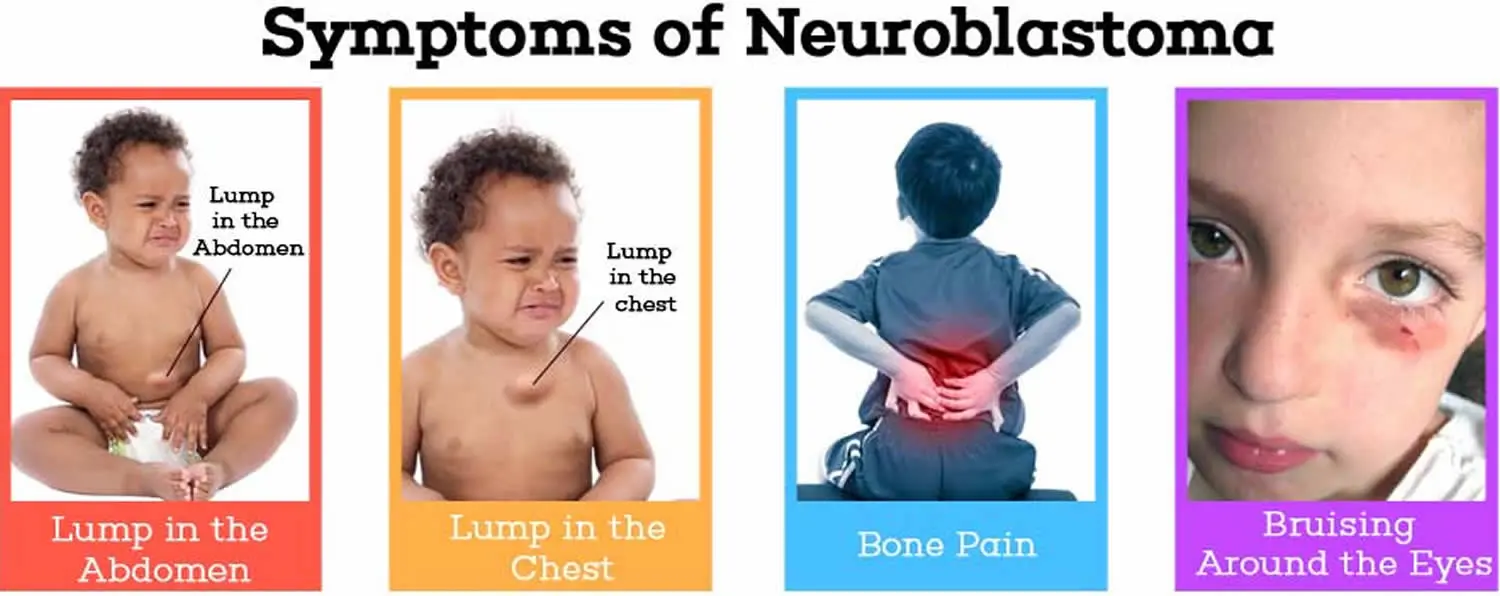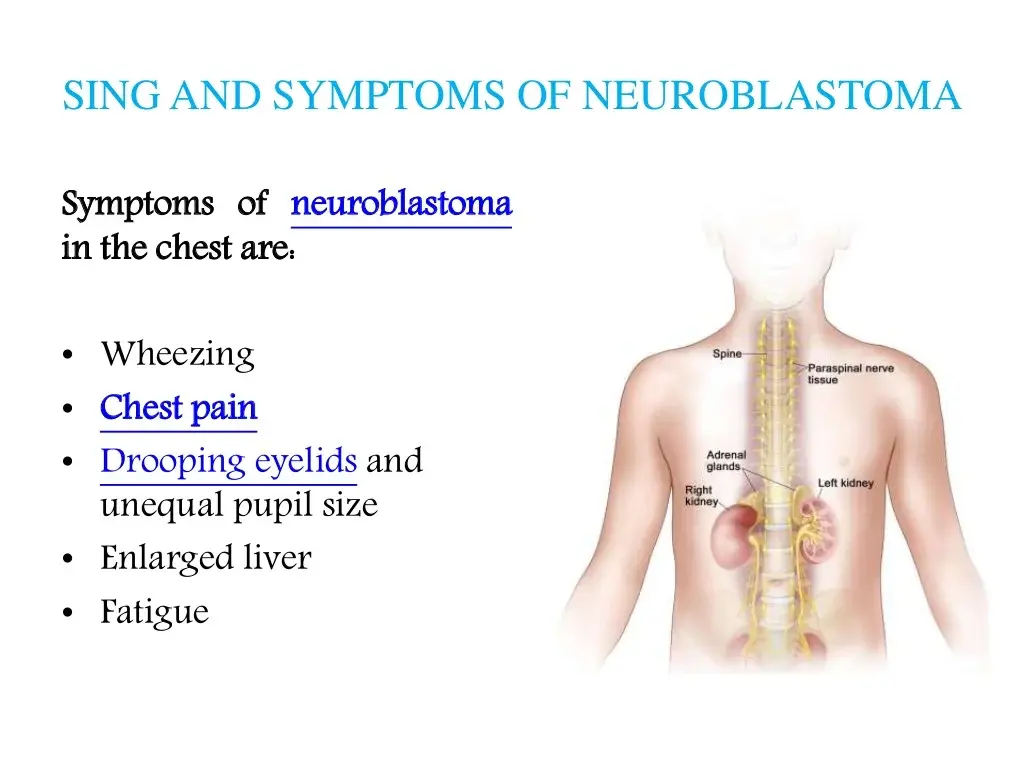Can Neuroblastoma be Cured?
Sometimes
Treatment success depends on the stage of neuroblastoma, age of the child, and response to therapy; outcomes can range from cure to more challenging cases, and long-term follow-up is often necessary

What is Neuroblastoma?
Neuroblastoma is a type of cancer that most commonly occurs in young children, arising from immature nerve cells. Treatment may involve surgery, chemotherapy, radiation therapy, and stem cell transplantation. Prognosis varies depending on the stage and risk factors. Ongoing monitoring and supportive care are essential components of managing neuroblastoma.

Clinical Aspects

Characteristics
Cancer that develops from immature nerve cells, often occurring in adrenal glands or nerve tissue along the spine, chest, abdomen, or pelvis

Symptoms
Abdominal swelling, pain, weight loss, fever

Diagnosis
Clinical evaluation, sometimes genetic testing

Prognosis
Variable, depends on specific syndrome

Complications
Skin and neurological complications, potential for systemic issues
Etiology and Treatment

Causes
Genetic mutations, usually sporadic (not inherited), some cases associated with genetic syndromes

Treatments
Surgery, chemotherapy, radiation therapy, immunotherapy

Prevention
Surgery, chemotherapy, radiation therapy, immunotherapy
Public Health and Patient Perspectives

Epidemiology
Rare genetic disorders affecting skin and nervous system

Patient Perspectives
Lifelong management tailored to specific syndrome
While the information presented here reflects the current knowledge about these conditions and treatments, it’s important to understand that individual cases may differ. Consulting with a healthcare professional is crucial for accurate information tailored to your specific needs.
Share: